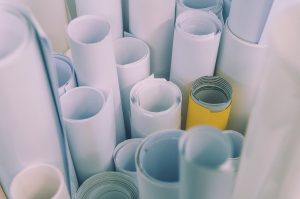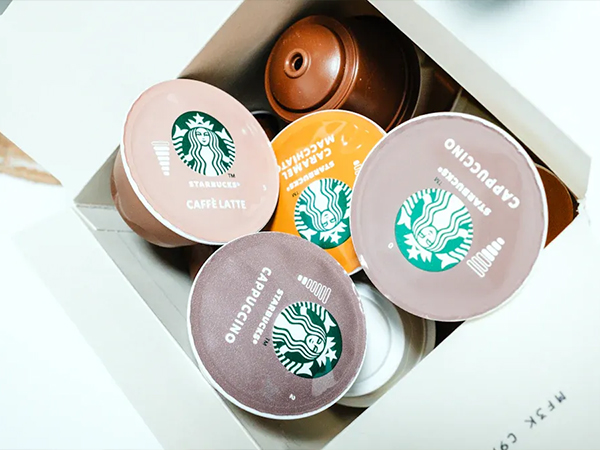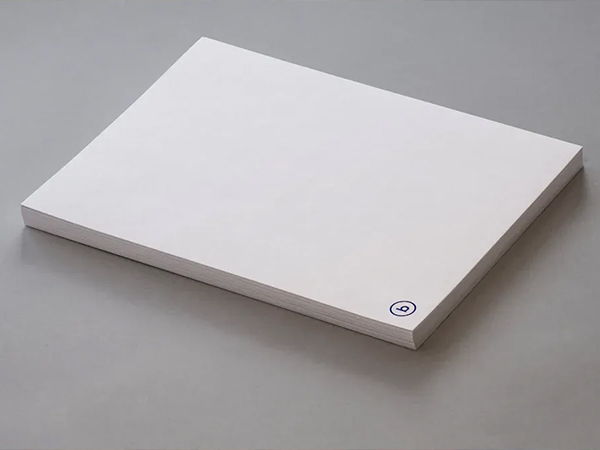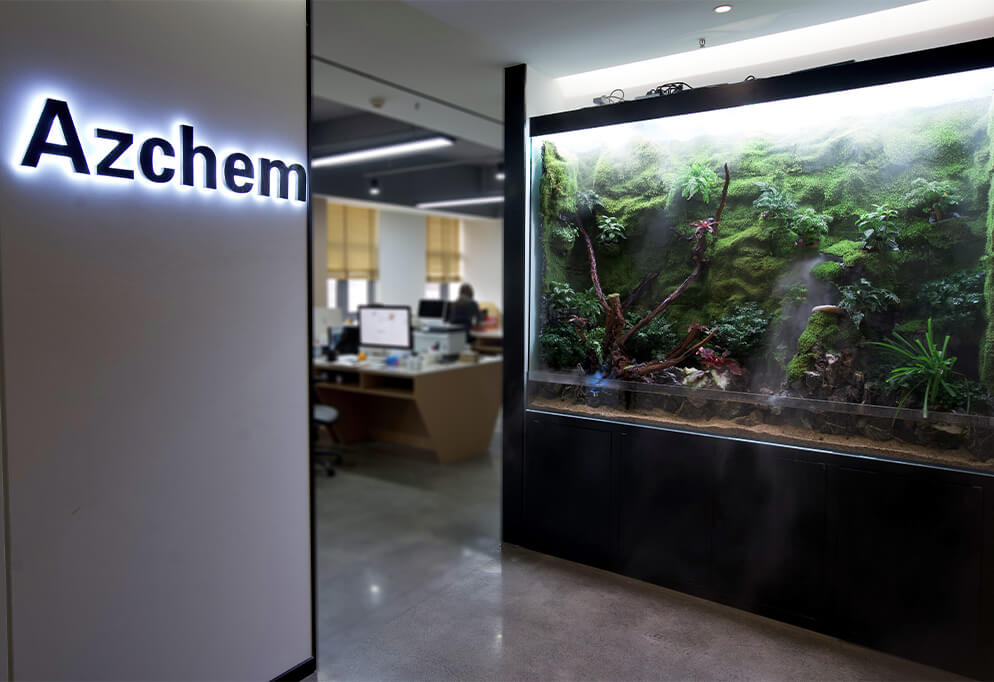
Cationic Surface Sizing Agents play a vital role in high-speed papermaking. You see a clear difference in paper quality and efficiency when you use these agents. For example, studies show that water absorption values decrease by 32% and tensile strength increases by 16% with advanced sizing solutions.
| Benefit | Improvement |
|---|---|
| Water Absorption | -32% |
| Tensile Strength | +16% |
You gain superior printability, water resistance, and cost-effectiveness, making your production process more reliable and competitive.
Key Takeaways
- Cationic Surface Sizing Agents significantly improve paper quality by reducing water absorption by 32% and increasing tensile strength by 16%.
- These agents enhance printability and water resistance, leading to sharper images and better ink adhesion, which is crucial for high-quality printed materials.
- Optimizing the concentration and pH of the sizing solution can maximize the interaction between the sizing agent and paper fibers, improving overall performance.
- Using cationic agents increases production efficiency by enhancing fiber retention, reducing waste, and lowering energy consumption, which supports sustainability goals.
- Cationic Surface Sizing Agents provide a competitive edge in high-speed papermaking, ensuring consistent quality and reliability in production.
What Are Cationic Surface Sizing Agents?

Chemical Properties
You encounter Cationic Surface Sizing Agents as specialized chemicals designed for papermaking. These agents contain positively charged groups that interact efficiently with the naturally negative cellulose fibers in paper. The main chemical components include cationic starches, cationic resins, and cationic polymers. Each component brings unique benefits to the sizing process.
| Component Type | Description |
|---|---|
| Cationic Starches | Easily dispersible in water, providing excellent water retention for papermaking. |
| Cationic Resins | Synthetic polymers that enhance strength and durability, improving ink holdout and resistance. |
| Cationic Polymers | Modified synthetic polymers with high molecular weight, offering strength and durability. |
You also find that these agents often contain tertiary amino group-containing monomers, C1 to C4 alkyl(meth)acrylates, and styrenes. The typical composition by weight looks like this:
| Component | Percentage by Weight |
|---|---|
| Tertiary amino group-containing monomer | 15 to 35% |
| C1 to C4 alkyl(meth)acrylate | 30 to 85% |
| Styrenes | 1 to 50% |
These chemical properties allow you to achieve strong, water-resistant, and printable paper surfaces, especially at high production speeds.
Interaction with Paper Fibers
When you apply Cationic Surface Sizing Agents, the positive charges on the molecules bind directly to the negatively charged cellulose fibers. This interaction creates a uniform film on the paper surface. You gain improved water resistance and enhanced printability because the sizing agent forms a barrier that controls liquid penetration.
Several factors influence your choice of sizing agent for different paper grades:
| Factor | Explanation |
|---|---|
| Paper Characteristics | The type and characteristics of the paper, such as grammage, porosity, and surface structure, can affect the performance of the cationic starch surface sizing treatment. |
| pH of Sizing Solution | The pH of the cationic starch sizing solution is crucial as it affects the charge density of the cationic starch and influences the binding with cellulose fibers. |
| Drying Conditions | Proper drying conditions are essential to set the surface sizing effectively and achieve desired properties. |
| Concentration of Cationic Starch | The concentration of cationic starch in the sizing solution directly impacts the amount of sizing material applied to the paper. Proper optimization of concentration is essential to achieve the desired paper properties. |
Tip: You can optimize your paper’s performance by adjusting the concentration and pH of the sizing solution. This ensures the best interaction between the sizing agent and the fibers.
How They Work
Film Formation
You rely on Cationic Surface Sizing Agents to create a protective film on paper fibers. This process begins when the positively charged molecules in these agents interact with the negatively charged cellulose fibers. The result is a dense network structure that includes polymer chains, starch, and fiber links. You see this network forming a water-resistant barrier that covers the paper surface.
- The agents cross-link with starch, strengthening the film.
- Electrostatic attraction keeps the sizing agent on the surface, preventing deep penetration.
- The glue fills gaps between fibers, smoothing the surface and boosting strength.
You notice that the addition of cationic polymers, such as cationic PAM, helps the starch solution remain on the paper surface. This effect increases bending stiffness and reduces liquid penetration. The table below shows how these interactions improve paper properties:
| Evidence | Description |
|---|---|
| Cationic PAM Effect | Starch solution stays on the surface, not inside the paper structure. |
| Improved Bending Stiffness | Less starch penetration leads to stronger, stiffer paper. |
| Electrostatic Interaction | Cationic PAM holds starch on the surface through charge attraction. |
Tip: You can achieve a smoother, stronger paper surface by optimizing the amount of cationic polymer in your sizing solution.
Surface Modification
You benefit from Cationic Surface Sizing Agents because they modify the paper surface to enhance printability, water resistance, and durability. Scientific studies confirm that cationic starch and polyoxometalates improve surface properties. Advanced techniques, such as ToF-SIMS and FTIR-ATR, show these agents remain at the surface, increasing polarity and aiding ink diffusion.
- Enhanced surface polarity improves ink absorption.
- High internal sizing immobilizes ink dyes and pigments.
- Retention of compounds at the surface boosts print quality.
You can see the impact of different modification techniques in the table below:
| Modification Technique | Result | Improvement |
|---|---|---|
| Rosin in cationic SAE | Enhanced water resistance | Cobb value decreased by 40% |
| Fiber crosslinking cationic latex | Improved bonding strength | Contact angle increased to 93° |
| A-173 in cationic silicone-acrylic latex | Enhanced mechanical properties | Ring crush index up 20%, tensile strength improved |
When you compare sizing agents, you find that cationic starch outperforms others in water resistance and print quality. The table below highlights these differences:
| Sizing Agent Type | Water Resistance | Print Quality | Notes |
|---|---|---|---|
| Cationic Starch | High | Improved | Outperforms anionic combinations |
| Rosin | Moderate | Good | May yellow in alkaline conditions |
| AKD | High | Flexible | Non-toxic, suitable for various applications |
| SMA | Variable | Adaptable | Works with different paper types |
| Starch | Low | Poor | Eco-friendly but hydrophilic, increases water absorption |
Note: You can improve both water resistance and printability by choosing the right modification technique and sizing agent.
You gain a competitive edge in high-speed papermaking by using Cationic Surface Sizing Agents. These agents help you produce paper with superior surface strength, reduced linting, and consistent quality, even at fast production rates.
Key Benefits
Printability and Surface Strength
You achieve superior printability and surface strength when you choose Cationic Surface Sizing Agents for your papermaking process. These agents form a robust molecular structure by interacting with starch. The cross-linking intensity increases, which enhances hydrophobic properties. Your paper becomes more resilient to physical stress. You notice less surface abrasion and tearing during printing and handling. This improvement in surface strength ensures that your paper maintains its integrity, even under demanding conditions.
Tip: Stronger paper surfaces reduce machine downtime caused by tearing or linting, which helps you maintain consistent production quality.
Water and Ink Resistance
You gain significant advantages in water and ink resistance when you treat your paper with advanced sizing agents. The treated paper exhibits higher ink adhesion and lower water absorption. You see improved color fastness and ink peel resistance compared to untreated samples. The following table highlights these differences:
| Sizing samples | Color fastness grade (wet) | Ink peel resistance grade |
|---|---|---|
| Untreated | 2–3 | 1–2 |
| TBPU/PVA | 4 | 4–5 |
Paper treated with TBPU/PVA shows a lower contact angle, which means better wettability and higher hydrophobic properties. You experience fewer issues with ink smudging or bleeding. Your printed materials look sharper and last longer, even in humid environments.
Production Efficiency
You optimize your production efficiency by using Cationic Surface Sizing Agents. These agents increase the retention rate of sizing materials, which reduces waste and improves recycling outcomes. You also see a decrease in BOD/COD load, which enhances effluent quality and supports environmental compliance. The table below demonstrates the impact on key production metrics:
| Aspect | Before Cationic Starches | After Cationic Starches | Impact on Production Efficiency |
|---|---|---|---|
| Retention of Sizing Agents | 10-20% | 70-80% | Reduced waste in recycling |
| BOD/COD Load | Increased | Decreased | Improved effluent quality |
| Paper Properties | Poor | Enhanced | Better paper quality |
You benefit from faster machine speeds and less downtime. Your operation becomes more cost-effective, and you produce higher-quality paper with fewer resources.
Note: Efficient sizing not only improves your bottom line but also supports your sustainability goals.
Comparison with Other Sizing Agents
Cationic vs. Anionic/Neutral
You often face a choice between cationic, anionic, or neutral sizing agents when optimizing your papermaking process. Each type brings different strengths to the table, but their performance diverges sharply in high-speed environments. Cationic Surface Sizing Agents interact directly with the negatively charged cellulose fibers, forming a strong bond. This bond leads to better retention and improved surface properties.
When you compare the effectiveness of different systems, you see clear differences in strength improvements:
| Sizing Agent System | Wet Tensile Strength Improvement | Dry Strength Improvement |
|---|---|---|
| PAE (0.4%) | 89% higher than single PAE | N/A |
| CS (1.3%) | N/A | 21% higher than single CS |
| Cationic Starch/CNF | Superior to cationic polyacrylamide | N/A |
You notice that cationic starch combined with cellulose nanofibers (CNF) outperforms cationic polyacrylamide, especially in wet strength. Anionic and neutral agents often struggle to deliver the same level of performance, particularly at high speeds.
Tip: If you want consistent strength and printability at fast production rates, cationic systems give you a clear advantage.
Unique Advantages
You gain several unique benefits when you choose cationic agents for high-speed lines. These agents improve retention of fibers and fillers, which increases paper strength by up to 15%. You also see reduced waste and lower energy use, which aligns with your sustainability goals and lowers operational costs.
| Advantage | Description | Impact on Production Lines |
|---|---|---|
| Improved Retention | Enhances fiber and filler retention | Increases paper strength by up to 15% |
| Reduced Waste and Energy | Supports sustainability | Lowers operational costs |
| Strong Adhesion | Delivers durability in fast-paced environments | Supports high-speed efficiency |
Cationic Surface Sizing Agents provide strong adhesion, which ensures your paper withstands the rigors of high-speed production. You experience fewer breaks and less downtime. This reliability makes cationic agents the preferred choice for modern papermaking operations.
Impact on Paper Quality and Sustainability

Consistency and Performance
You demand reliable results in every batch of paper you produce. Cationic surface sizing agents help you achieve this consistency, especially at high speeds. These agents enhance the surface strength of your paper, binding fibers tightly and reducing fiber shedding during coating. You notice improved water resistance, which becomes essential for products exposed to moisture. Printability also increases, giving you sharper images and better ink adhesion. Your paper absorbs less moisture from the air, so it stays stable during storage and transport.
| Feature | Description |
|---|---|
| Surface Strength | Enhances surface strength and fiber binding, reducing shedding during coating. |
| Water Resistance | Improves water resistance, crucial for moisture-sensitive applications. |
| Printability | Increases ink adhesion and image clarity, enhancing print quality. |
| Hygroscopicity | Reduces hygroscopicity, improving stability during storage and transport. |
You also benefit from smoother paper surfaces. The sizing agents fill in surface irregularities, so your paper feels better and looks more uniform. You see improved opacity, which helps when you produce packaging or posters. The protective barrier formed by these agents prevents ink from spreading, so your printed materials look crisp and professional.
- Enhanced smoothness improves the feel and appearance of your paper.
- Ink repellency keeps images sharp and prevents smudging.
- Improved opacity reduces light penetration, ideal for packaging.
- Resistance to moisture prevents warping and keeps paper durable.
- Print quality stands out with vibrant, clear text and images.
- Reducing paper weight lets you save on materials without sacrificing performance.
Environmental Considerations
You want your papermaking process to support sustainability. Cationic surface sizing agents help you reduce waste by increasing the retention of fibers and fillers. You use less raw material to achieve the same strength and quality. Lower paper weight means you consume fewer resources and reduce transportation costs. The improved efficiency also leads to less energy use and lower emissions.
Note: By choosing cationic surface sizing agents, you support both high-quality production and environmental responsibility. Your operation becomes more efficient, cost-effective, and eco-friendly.
You play a key role in advancing high-speed papermaking by choosing cationic surface sizing agents. These agents deliver superior quality, efficiency, and sustainability. You can maximize benefits by:
- Enhancing water resistance for packaging and specialty papers
- Improving printability for sharper, more vibrant images
- Increasing surface strength to reduce abrasion and tearing
- Lowering costs through efficient dosing
| Key Insight | Description |
|---|---|
| Sustainability Trends | Embrace bio-based chemistries for future growth |
| Digital Capabilities | Leverage technology for operational excellence |
| Continuous Learning | Stay agile with ongoing education and collaboration |
Consider reviewing your sizing strategies to stay ahead in a rapidly evolving industry. For tailored solutions, consult with experts or explore new technologies that align with your production goals.
FAQ
What makes cationic surface sizing agents better for high-speed papermaking?
You gain stronger fiber bonding and faster film formation with cationic agents. These properties help you achieve higher machine speeds and consistent paper quality.
Tip: Choose cationic agents for reliable performance in demanding production environments.
Can you use cationic surface sizing agents with recycled fibers?
Yes, you can apply cationic sizing agents to recycled fibers. These agents improve fiber retention and surface strength, even when you work with lower-quality pulp.
- Enhanced bonding
- Improved water resistance
How do cationic surface sizing agents impact printability?
You see sharper images and better ink adhesion when you use cationic agents. The modified surface prevents ink bleed and smudging.
| Benefit | Result |
|---|---|
| Ink Adhesion | Improved |
| Image Clarity | Enhanced |
Are cationic surface sizing agents environmentally friendly?
You reduce waste and energy use with cationic agents. Many products use bio-based ingredients, supporting your sustainability goals.
Note: Check product specifications for renewable content and eco-certifications.






